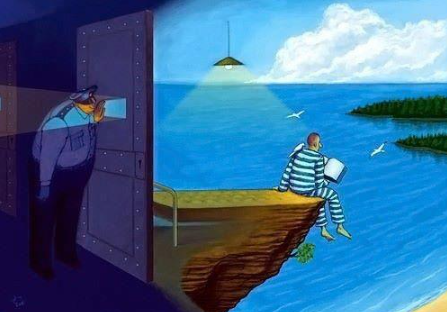Autobiographical Storytelling in prison
- Lucrezia Ferrà

- 18 août
- 2 min de lecture
An opportunity for reconciliation and inclusion In the prison context, often perceived as a place of social and identity suspension, autobiographical storytelling is a powerful tool for self-reconstruction, personal transformation and social reintegration. Telling one's story in an environment where subjectivity is often denied or reduced to a registration number becomes a profoundly human and revolutionary act.

Working on one's own experiences through writing or autobiographical storytelling can have profound effects on the mental, emotional and social well-being of prisoners. Among the most significant benefits are: 1. Self-recognition. Many prisoners have a history of exclusion, marginalisation, abandonment or violence. Telling their story allows them to rebuild a thread between the past and the present, to make sense of the events they have experienced and to recognise themselves as active subjects. 2. Responsibility and re-elaboration. Through storytelling, it is possible to face one's choices and their consequences, take responsibility for them and re-elaborate them in a constructive way to bring about change. Narration allows one to put critical distance between oneself and one's crime, initiating a process of inner reconciliation. 3. Reappropriation of identity. Imprisonment risks producing depersonalising effects on prisoners: autobiographical storytelling allows them to rediscover their uniqueness and individuality, to assert themselves as people rather than as “prisoners”. 4. Emotional expression. Telling one's life story helps to untangle emotional knots and deal with trauma, pain and grief. It is a form of catharsis, but also a narrative processing of pain, which is fundamental for personal growth. 5. Communication and listening. Writing or telling stories also means sharing. In autobiographical groups in prison, interaction with others allows inmates to break out of isolation, create empathetic bonds, and learn to listen and be listened to. Autobiographical storytelling does not end within the prison walls but represents a bridge to society.
The story can become a message to the outside world, a tool for communicating with the community and sharing one's experience, breaking down stereotypes and prejudices.
Those who write their autobiography also reclaim their future. Telling one's story does not mean looking back and reflecting on the past, but also designing a new, more conscious and responsible future identity. In light of the rehabilitative and re-educational purpose of the prison experience, this process is fundamental.
Autobiographical storytelling is therefore a tool to support social reintegration: a person who has been able to rebuild their identity will be more motivated to build new functional relationships, look for a job, and contribute actively and positively to the community. In some cases, autobiographical texts produced in prison are published, read in public, or turned into plays or video documentaries.
These initiatives build bridges of understanding between prison and society, between those inside and those outside. Giving voice to the stories of prisoners does not mean justifying, but listening. And only by truly listening can we imagine a more inclusive society, capable of giving second chances.






Commentaires